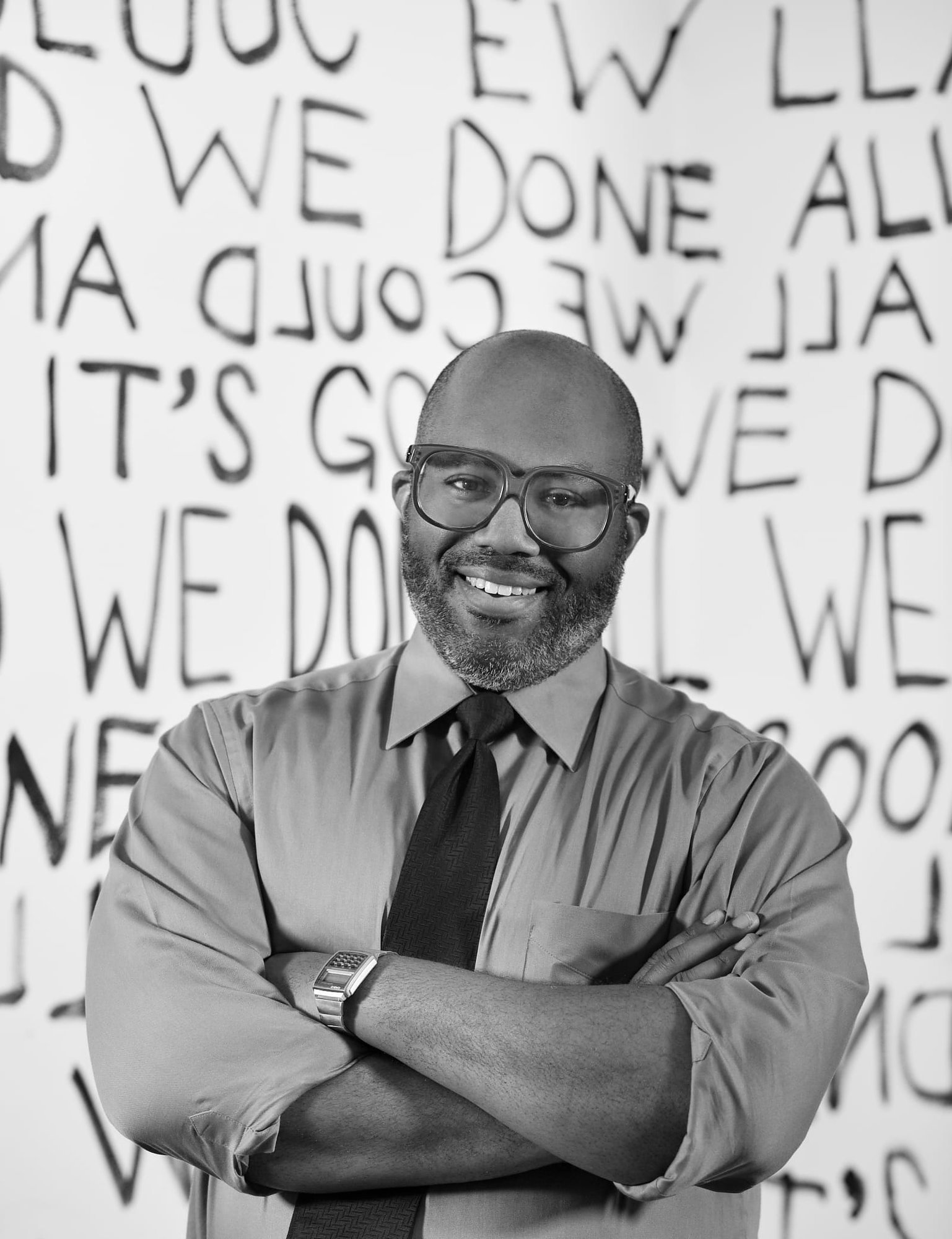Trenton Doyle Hancock

The celebrated Afrofuturist Sun Ra wrote, “We hold this myth to be potential / Not self evident but equational: / Bridge-doorway / …To another kind unknown Living Live-Life.” Since fifth grade, Trenton Doyle Hancock has been creating a complex myth known as the Moundverse, a fantastical landscape of half-human, half-plant organisms called the Mounds and emaciated white creatures known as the Vegans. As Hancock explores their ongoing conflict through each artwork, the subject matter becomes a way to enter and name overwhelming issues of race, ecology, and religion—a “bridge-doorway” to potential lives. “The iconography of my life, pop culture references, religious references can be dumped into this mound field and be dealt with,” he says.
In his Saint Sesom works (an anagram for the biblical Moses), Hancock explores a “cult of color” where the saint helps Vegans see color by ritually consuming “Mound meat” in order to “become color-abled and see color and thus their salvation.” In The Legend is in Trouble, a mixed-media work depicting a Mound oozing and punctured by the ravenous Vegans, the cost for that salvation is made clear. “I want to make paintings that look like Mickey Mouse as roadkill,” he says, “that people smell before they see it.”
At times, Hancock’s interest in mythology leads to works that blur the line between performance and ritual. In his 2013 staging of Devotion in the Contemporary Arts Museum Houston, the artist dressed up as a blindfolded Mound. As the exhibition curator slowly fed Jell-O to him, she recited lyrics from an old gospel song: “I Love the Lord; He heard my cry / And pitied every groan.” Hancock responded by singing the melody in a booming voice, and by the end of this cycle the artist’s gallerist joined in repeating the phrase, inviting the museum goers into call-and-response. Is this the Moundverse or a church service? Are they priests or museum professionals? Museum goers or a congregation? The religious and aesthetic forms thread together into a subconscious tangle.
It’s that tangle that keeps Hancock’s work from navel-gazing or grotesquery for its own sake. Exploring his imagination leads the artist—and viewers who follow close behind—further into an archetypal world that can reveal new potentials in our own.
– Michael Wright
ink on paper, 8.5 x 11 inches, Courtesy of the artist and Shulamit Nazarian, Los Angeles
